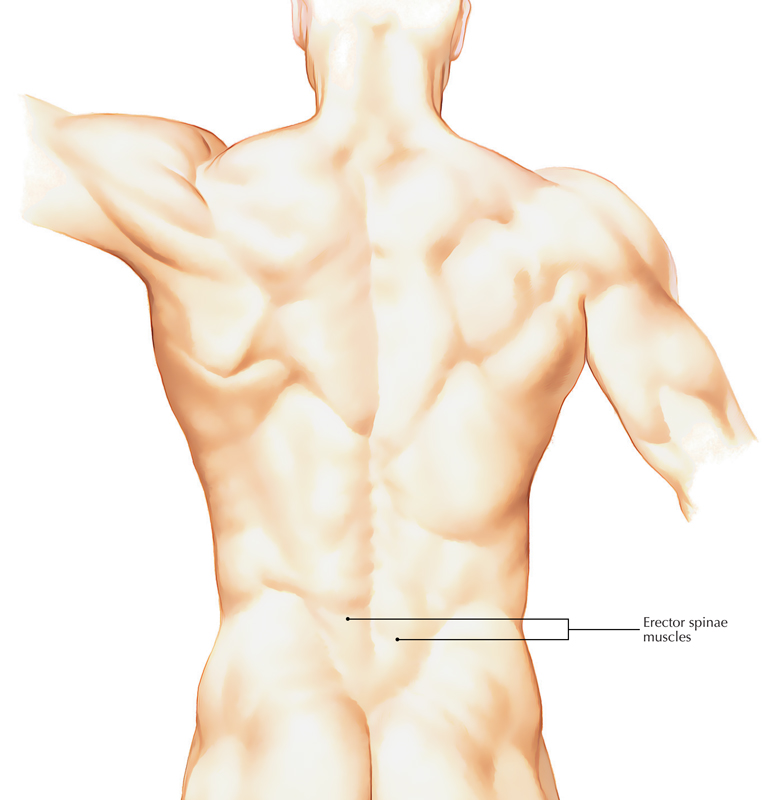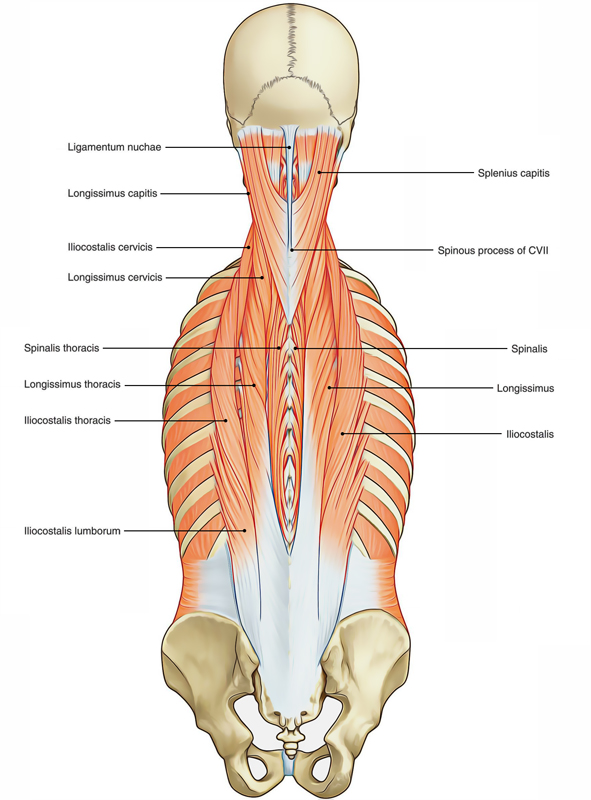Among intrinsic back muscles the erector spinae remains the largest group. The muscles are located medially amid the spinous processes, posterolaterally towards the vertebral column as well as laterally towards the angles of the ribs. Inside the thoracic and lumbar regions thoracolumbar fascia as well as the serratus posterior inferior, the rhomboid and splenius muscles surround them.

Erector Spinae Muscles
Parts
Iliocostalis Lumborum
It originates via sacrum, spinous processes of lumbar and lower two thoracic vertebrae and their supraspinous ligaments, and the iliac crest; and Insert inside angles of the lower six or seven ribs.
Iliocostalis Thoracis
It originates in Angles of the lower six ribs and inserts in angles of the upper six ribs and the transverse process of CVII.
Iliocostalis Cervicis
It originates in angles of ribs III to VI, while inserts in Transverse processes of CIV to CVI.
Longissimus Thoracis

Erector Spinae Muscles: Parts
It starts in blends with iliocostalis in lumbar region and is attached to transverse processes of lumbar vertebrae. While it Inserts in Transverse processes of all thoracic vertebrae, towards the tubercles of the lower nine or ten ribs laterally.
Longissimus Cervicis
It originates in transverse processes of upper four or five thoracic vertebrae and it inserts in transverse processes of CII to CVI.
Longissimus Capitis
It originates in Transverse processes of upper four or five thoracic vertebrae and articular processes of lower three or four cervical vertebrae and inserts in posterior margin of the mastoid process.
Spinalis Thoracis
It originates in Spinous processes of TX or TXI to LII and inserts in spinous processes of TI to TVIII (varies).
Spinalis Cervicis
It originates in lower part of ligamentum nuchae and spinous process of CVII (sometimes TI to TII) and inserts in spinous process of CII (axis).
Spinalis Capitis
It originates and inserts in semispinalis capitis.
Structure
- The iliocostalis is the outer or most laterally located column of the erector spinae muscles, which is related to the costal elements and travels from the common tendon of origin towards multiple attachments inside the angles of the ribs as well as the transverse processes of the lower cervical vertebrae.
- The longissimus is the middle or intermediate column, which outspreading from the common tendon of origin towards the base of the skull, is the biggest of the erector spinae subdivision. In this huge region, the longissimus muscle has the lateral location in the area of the transverse processes of the several vertebrae.
- The spinalis is the most medial muscle column and interlinks the spinous processes of neighboring vertebrae and is said to be the smallest among the subdivisions.
The spinalis is:
- Most constant in the thoracic region.
- Generally absent in the cervical region.
It is associated with a deeper muscle a.k.a. the semispinalis capitis as the erector spinae group approaches the skull.
Functions
- The main extensors of the vertebral column as well as head are the muscles in the erector spinae group.
- They straighten the back, returning it towards the upright position from a flexed position, as well as draw the head posteriorly when they act together.
- Via contracting and relaxing in a synchronized way, they contribute in directing vertebral column flexion.
- They laterally turn the vertebral column when they act together.
- Individual contractions of muscles attached to the head turn the head towards the dynamically constricting side.

 (55 votes, average: 4.83 out of 5)
(55 votes, average: 4.83 out of 5)